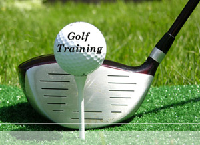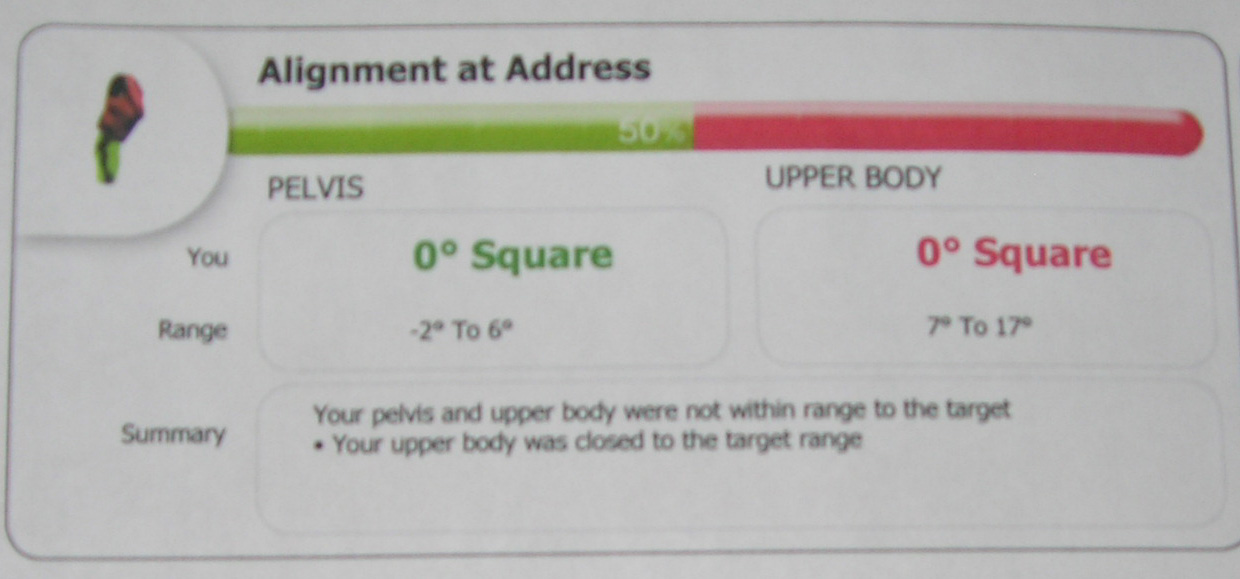Golf Swing Improvement -- K-Vest and TPI Golf and Fitness
It has been a while, but I think you will all find this very interesting.
All serious golfers strive to continuously improve their abilities. Even the best professionals have changed their golf swings with focus on improvement and consistency (more fairways hit, more greens in regulation, closer to the cup approach shots, etc. ).
There are at least 4 schools of thought regarding swing changes.
1. Leave well enough alone. That is, if you are doing well, don't fool with it, or, "if it ain't broke, don't go a fixin' it".
2. Everyone has their own basic swing characteristics, for example, Jim Furyk, Mike Weir, Arnold Palmer, Lee Trevino, Moe Norman, Jamie Sadlowski, and Jason Gore. Use that swing and work on ball flight, shot consistency and accuracy.
3. Continually work on improving your swing. Fully study and evaluate swing positions, potential power leaks, ball flight characteristics, optimum equipment fitting, etc. and focus on improvements that will optimize performance and minimize any flaws.
4. Hey! I don't have enough time to practice, more or less work on swing changes. Let's just play some golf!
The level of effort that you choose for working on improvement is personal. If you plan to compete with PGA tour professionals then you likely know the commitment that you must make. If you are competing with yourself to improve your game and lower your handicap, then either number 2 or 3, above, should start you in the right direction.
I work with all age golfers of different skill levels, although most are the average golfers who play on an occasional basis.
But, I spent most of my life in the world of industry where striving for continual process improvement is a daily requirement. So despite the fact that I am old, overweight, and have already had one heart attack, I want to continually improve my golf ability, and I want to find ways to better help my students with their game.
With this in mind, I decided to go through a more technical evaluation of my swing and see how it compared to players on the PGA tour.
K-Vest and TPI Swing Evaluation Process
A process that has been reported to provide a scientific evaluation of the golf swing and compare each swing to the typical swing of tour professionals is the K-Vest and Titleist Performance Institute (TPI) swing evaluation process. I had heard about this in the past but did not pay much attention to it.
During the winter I had fallen on ice and afterward had significant pain issues with my hips and legs. After an MRI, EMG, and other evaluations, my doctor sent me to physical therapy sessions.
The PT sessions were conducted by Detroit Medical Center (DMC) Rehabilitation Institute of Michigan staff at Novi, Michigan. Katie Shea, DPT, and PT assistant Alison were excellent. They provided specific therapy and a series of exercise routines that helped minimize the hip and leg pain. These were focused at strengthening my core muscles in the pelvic area. (FYI, stationary pedal biking helped me the most to minimize my hip pain.)
A few weeks after I finished those sessions I was at a golf show and I met a physical trainer who is also TPI certified. I decided to participate in a K-vest and TPI evaluation to better understand that process and to see if it could provide another step toward additional improvement and a higher level of play.
My session was conducted by Maria Carroll. Maria is a certified Titleist Golf Fitness Instructor Level 3 and is a physical therapist assistant in Lansing, Michigan. She is also a certified PGA Tour Fitness Consultant, and certified personal trainer. She specializes in golf rehabilitation for persons who have been injured and want to be able to play golf again. (Contact Maria at maly57@live.com).
The K-vest / TPI evaluation is a two-part process. For part 1, you wear the K-vest. (Based on my session, the K-vest is comfortable and does not interfere with your swing.)
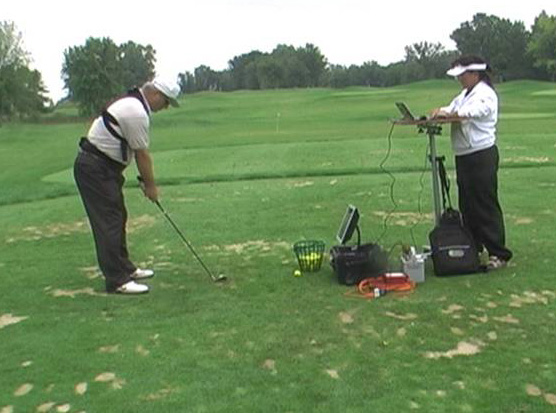
As you swing, the K-vest measures the rotation and positions of your thorax area (upper body) and your pelvic area (lower body) and sends this information to a computer. The data is presented in a series of graphs and also in 3-D graphics.
For each of 4 positions during the swing, the Address, Top, Impact, and Finish positions, there is a data range that is typical for tour professionals. Your swing position data is compared to these ranges.
Example: Generic graph
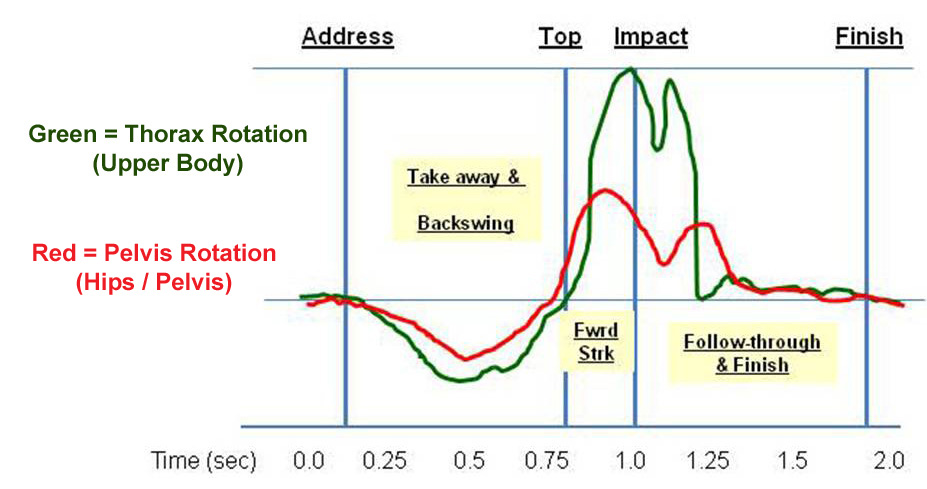
Additionally, the graphs compare the upper and lower body rotations during the swing. There are suggested parameters as to when and where the lower and upper rotations should occur and be positioned during the swing. These parameters parallel the swing position ranges of top professional golfers.
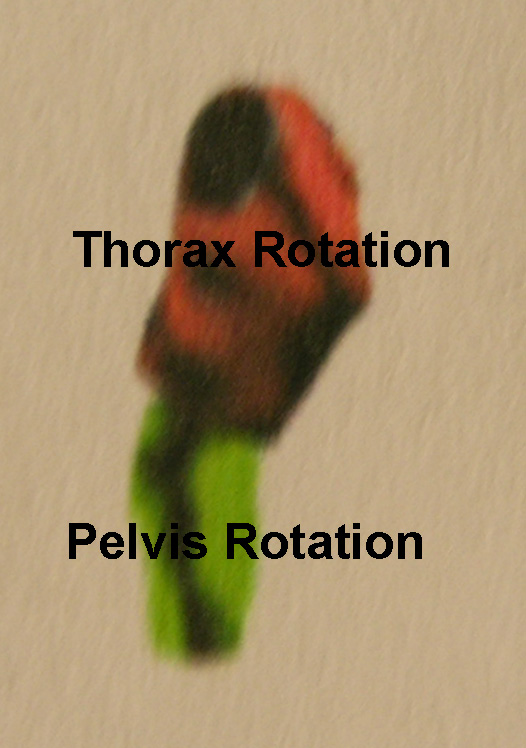
You can address the ball and slowly move through your swing positions and watch the computer screen 3-D graphics to see when you are within the suggested range and when you move out of the suggested range.
In my case, at address I was 0° square to the target line (both hips/pelvis and shoulders/thorax). Typical tour professionals have a slightly closed stance with their thorax / upper body in the 7° to 17° range.
The swing evaluation process also provides other data, such as your kinematic sequence (speed sequence from pelvis, thorax, arms, and club), and your spine rotation during the swing.
Part two of the session provides the evaluation, further evaluates your flexibility, and recommends a course of action based on the findings.
The K-vest / TPI findings
Despite good golf shots, my ability to create a swing that is in the comparable range to that of the tour pros was hampered by my lack of upper body rotation flexibility, marginal hamstring and leg flexibility, and my overall lack of good physical conditioning (I'm not 30 years old any more!).
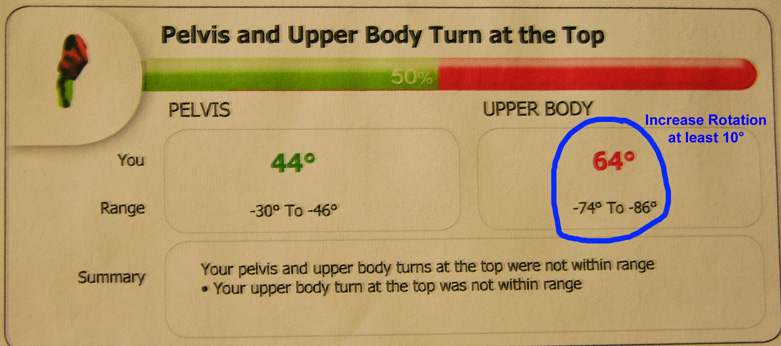
I had more than enough hip and pelvic rotation, but not enough upper body rotation in relation to the pelvic rotation. I coined the phrase "swollen core" (i.e., a protruding, overweight abdomen), and told Maria that it was getting in the way of good upper body rotation.
To better describe the upper body rotation vs. the overall rotation, Maria had me stand straight with my arms crossed with fingers touching my shoulders, and then trying to rotate my upper body without any hip rotation. This would provide the increased torque that would help increase swing dynamics.
Maria said that the focus of an improvement program for me would be to work on (1) my upper body flexibility, (including shoulder rotation without rotating my hips), (2) my overall core strength, including hamstrings and legs, and (3) reducing my "swollen core", i.e., lose some weight around my mid-section.
Interestingly, in a Golf Digest article, (Autumn, 2009 timeframe) Tom Watson suggested that as you become older and your flexibility decreases you must use your hips more to get the rotation that you need.
Even though it was demonstrated that I have good hip/pelvic rotation, despite my age I should improve my upper body flexibility and my overall flexibility and strength. This will help my golf swing and my overall health.
For me, I see a two-fold benefit from the K-vest / TPI session and Maria's suggestions. The primary reasons for me to improve flexibility and physical fitness are to help avoid future injury, especially back injury, and to be able to continue playing golf and work at my own continual improvement.
A second benefit of being familiar with this process, however, is that I can provide greater help to my students. I can pay better attention to their fitness level and stress the importance of maintaining good physical condition with the help of a certified personal trainer like Maria. I can also pay closer attention to the kinematic sequence of movement from the pelvis, chest, arms and clubhead.
For example, I typically have students hold their lag position during the forward stroke, but a greater focus on the overall transition, including a delayed lag, may help students acquire a smoother, more consistent stroke.
A video of my K-vest swing evaluation and fitness session can be viewed via the training website. Contact us to receive a password to login and view the video.
My Next Steps
Maria's suggestions provided a personal exercise plan to help improve my flexibility and core strength. The exercises take about 40 to 45 minutes and are similar to, but more aggressive than, those that I was completing for my physical therapy sessions. Contact Maria at maly57@live.com if you want to customize a K-vest and "get fit" program for yourself.
Before you begin any exercise program consult with your personal physician to assure that you are healthy enough to begin a fitness program. Follow his/her direction.
Unfortunately, my ability to sustain a very aggressive fitness routine has been hampered by repeated injuries to old sport injuries and other injuries, including issues with both hips. At my age and marginal fitness level I have found that I must pursue a less vigorous effort in order to continually work at improving my physical fitness.
Persons younger than me, or those who have maintained their fitness level better than I have, should not have any problems with the more intense fitness routine.
There are two programs, however, that I found work well for me and that I am able to routinely complete.
First, I have been able to resume the injury-focused personal exercise program that I was provided with by the DMC physical therapists. That program was developed over several PT sessions, and those exercises are similar to the exercises that Maria offered during the fitness evaluation.
For us older, or less fit persons, a second program that I have tried that provides me an excellent workout without excessive stress is available to everyone via public TV. The Joel Harper DVD series of workouts, titled "Firming After 50", (Upper Body and Lower Body workouts) demonstrates 3 fitness levels of activity and provides excellent cardio and core strength-building fitness programs. (Available from public TV at http://www.dptvmedia.org/Joel-Harpers-Firming-After-50-DVD-p359.html.)
Almost anyone should be able to complete those exercises, with permission from their personal physician.
As my fitness improves I may be able to increase the level of effort and resume the more aggressive program.
What should you do? Don't wait. Keep in golf shape and health shape. Start your own physical fitness activity program today. Make this golf season your best golf season ever.
I do believe that improving my level of fitness will help me continue to enjoy playing golf and teaching golf. A K-vest golf swing and fitness evaluation program like Maria offers can help better golfers understand their swing, improve their fitness level, and become even more competitive.
An appropriate personal fitness program can help everyone better enjoy playing golf.
Contact me if you have any questions or comments regarding this article or the online golf instruction training courses, or if you would like to view the video or participate in an instructor-led Golf Training Program in southeast Michigan.
PS. Be sure to ask about our 2010 early season student specials for the SwingRite golf swing trainer and the Sports Senor's Swing Speed Radar with Tempo Timer, and about the new DVDs.
Hit 'em straight!
Phil Lawrence
